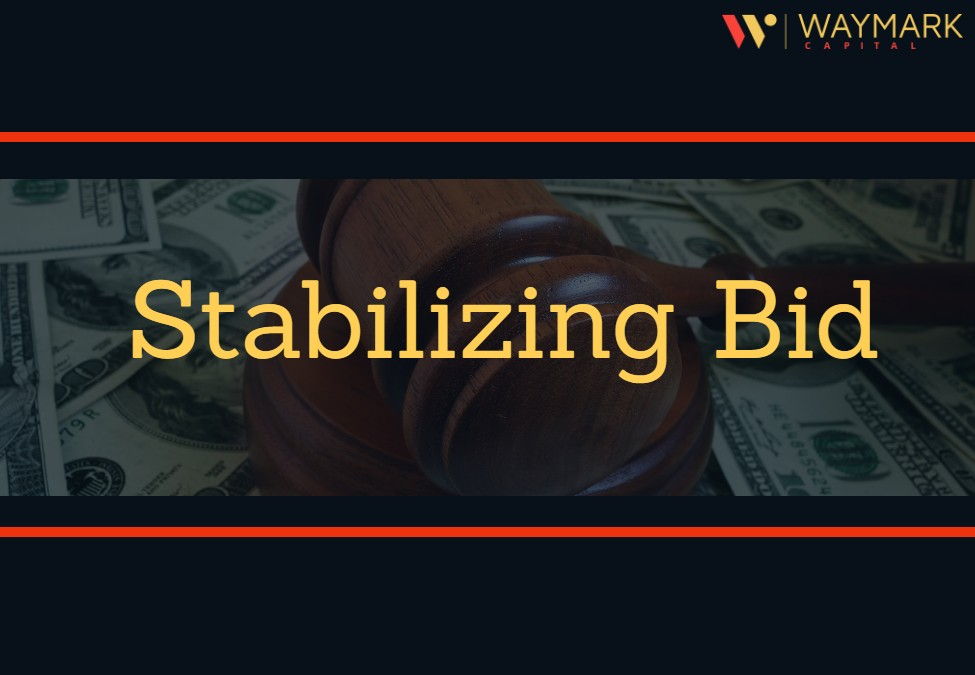
3 August 2022
Imagine in a given neighborhood, the value of homes starts to drop; the homeowners may default on their monthly mortgage payments.
To prevent this occurrence, a large mortgage provider can buy property in the area at above-market rates because they believe that such a crisis is temporary and they will be able to sell the homes later at a profit.
The process of acquiring assets at above-market rates to maintain an artificially market price of a security is known as a stabilizing bid. Stabilizing transactions are allowed and common in the property market as well as the stock market, especially after an IPO.

A stabilizing bid in initial public offerings can be defined as an attempt of the company going public to prevent its IPO price level from dropping below the offering price. A stabilizing bid can be done before and/or after initial public offerings.
If the stabilizing bid is made premarket, various things can be effected, such as the prospectus of the company, determining who to allocate shares to prevent investors from flipping the IPO and discouraging flipping activities.
Although price manipulation on the first day in the stock market is generally prohibited, stabilizing bids are allowed, albeit they need to meet specific thresholds.
In the United States, the SEA (Securities Exchange Act) of 1934 comprises a code of federal regulations governing bids. In addition, the FINRA (Financial Industry Regulatory Authority), the regulatory agency for most stock exchanges in the United States like Nasdaq and the New York Stock Exchange, has rules and regulations governing stabilizing transactions.
Stabilizing the price can be defined as the act of ensuring that the market price of a security of a given company doesn’t drop below the offer price. Stabilizing the price is vital for companies because no company wants a negative perception among investors after listing.
Stabilizing the price level comprises buying back shares that were overtraded or shorted in an attempt to create a fresh demand for a new issue of shares and stabilize the stock price.
A stabilizing bid is placed by underwriters of a company going public or one that has already gone public. To prep for a stabilizing bid, the issuer can grant its underwriters a greenshoe option, also called overallotment option. This option allows the underwriters to overtrade or take short positions in 15% more shares than the company had when it went public.
A stabilizing bid can be opened at or below the IPO price, and the issuer can only have one stabilizing bid. The IPO’s managing underwriter will be in charge of opening the stabilizing bid on behalf of the company and syndicate members.
As illustrated above, a given company can only have one stabilization bid, but it can remain open indefinitely. The underwriter must adhere to recordkeeping requirements by notifying the securities and exchange commission when stabilization commences.
The purpose of a stabilizing bid is to stabilize or support the offer price of a given company’s stock on trading day after it goes public.
A stabilizing bid can be increased to a price no more than the highest present independent bid for the stock in the principal market if the principal market is open. If the primary market is shut down, the price should be no more than the highest bid when the market closed.
A stabilizing bid can be dropped or carried over into another market like the secondary market at a lower price regardless of the changes in transaction prices or independent bids for such security. If stabilizing activities are paused or terminated, they can’t be resumed at a price higher than the price at which the first bid was initiated.
When the stabilizing price is lower than the original price, the IPO underwriters will incur losses hence why they buy shares at a fraction of the original cost to stabilize the price.
As the name suggests, when a stabilizing bid is accepted, the price of the security naturally should stabilize. Establishing an additional source of demand for newly-issued shares helps to keep the stock in check above or around the issue price.
As illustrated above, stabilizing activities is initiated by a given company’s IPO underwriters to stabilize or support the market offering price of its stock after it goes public.
The penalty bid helps ensure that the trading price of the company’s stock doesn’t drop below its IPO price, which is essential for the company’s liquidity moving forward.
The managing underwriter buys back overtraded stocks or stocks that underwent short selling in an attempt to create a fresh demand for the newly-issued stock and stabilize their price.
On the other hand, a buyout is using leverage to buy out a company’s shareholders. The buyer can be the company’s management, staff, or a private equity firm. A buyout can have positive and negative impacts depending on which side of the deal you find yourself.

The people who benefit from buyouts or mergers are the original shareholders if the buyout price per share is more than the current price of the shares. The company’s staff can also benefit if the new owners maintain the company as it is; no layoffs.
Unfortunately, if, for instance, the company is bought out by an investment bank it can be a zero-sum game for the investment bank. Why? It will experience the same dividend issues as the previous owners if no significant changes are made regarding business day operations
A stabilizing bid can affect the market in various ways. For starters, it makes the company that launches the bid more appealing to investors. This might have a negative effect on other companies listed on the stock exchange, mainly if their stock is performing poorly. How? Investors will stop showing interest and move to the company with the best rates.
In conclusion, a stabilization bid is a bid made for the shares of an initial public offering by a company’s underwriters to prevent the stock price from drastically dropping. But, the underwriter can only make this bid under specific conditions.
Image Credits: